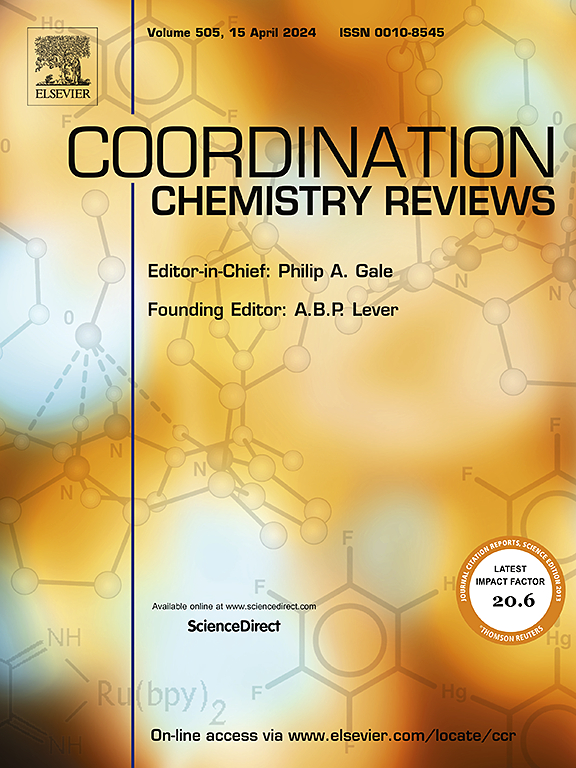Peptide-harnessed supramolecular and hybrid nanomaterials for stimuli-responsive theranostics
IF 20.3
1区 化学
Q1 CHEMISTRY, INORGANIC & NUCLEAR
引用次数: 0
Abstract
Theranostics has emerged as a promising approach to integrate therapy and diagnosis. However, existing systems have limitations such as low tumor specificity and potential toxicity. Recent efforts have focused on harnessing smart, stimuli-responsive materials to tackle these shortcomings. Among them, peptide-based supramolecular and hybrid nanomaterials offer remarkable potential: their ability to form diverse secondary structures (e.g., α-helices, β-sheets) enables precise control over drug release, imaging, and other functions in response to single or dual stimuli such as pH, enzymes, redox, or light. These materials have shown increased tumor selectivity, controlled drug release, and improved imaging accuracy through their secondary structures, supramolecular assemblies, and hybrid structures. Furthermore, they have shown promise in overcoming the limitations of existing theranostics in various fields including drug delivery, tissue engineering, phototherapy, wound healing, bioimaging, and clinical trials. In this review, we highlight the importance of stimuli-responsive mechanisms and peptide-based nanomaterial design and suggest directions for developing precise and efficient next-generation theranostics.

用于刺激反应治疗的肽利用超分子和杂化纳米材料
治疗学已经成为一种整合治疗和诊断的有前途的方法。然而,现有的系统有局限性,如低肿瘤特异性和潜在的毒性。最近的努力集中在利用智能,刺激响应材料来解决这些缺点。其中,基于肽的超分子和杂交纳米材料具有显著的潜力:它们能够形成不同的二级结构(例如α-螺旋、β-片),能够精确控制药物释放、成像和其他功能,以响应单一或双重刺激,如pH、酶、氧化还原或光。这些材料通过其二级结构、超分子组装和杂交结构显示出更高的肿瘤选择性、药物释放控制和成像精度。此外,它们在克服现有治疗方法在药物输送、组织工程、光疗、伤口愈合、生物成像和临床试验等各个领域的局限性方面显示出了希望。在这篇综述中,我们强调了刺激反应机制和基于肽的纳米材料设计的重要性,并提出了开发精确和高效的下一代治疗方法的方向。
本文章由计算机程序翻译,如有差异,请以英文原文为准。
求助全文
约1分钟内获得全文
求助全文
来源期刊

Coordination Chemistry Reviews
化学-无机化学与核化学
CiteScore
34.30
自引率
5.30%
发文量
457
审稿时长
54 days
期刊介绍:
Coordination Chemistry Reviews offers rapid publication of review articles on current and significant topics in coordination chemistry, encompassing organometallic, supramolecular, theoretical, and bioinorganic chemistry. It also covers catalysis, materials chemistry, and metal-organic frameworks from a coordination chemistry perspective. Reviews summarize recent developments or discuss specific techniques, welcoming contributions from both established and emerging researchers.
The journal releases special issues on timely subjects, including those featuring contributions from specific regions or conferences. Occasional full-length book articles are also featured. Additionally, special volumes cover annual reviews of main group chemistry, transition metal group chemistry, and organometallic chemistry. These comprehensive reviews are vital resources for those engaged in coordination chemistry, further establishing Coordination Chemistry Reviews as a hub for insightful surveys in inorganic and physical inorganic chemistry.
 求助内容:
求助内容: 应助结果提醒方式:
应助结果提醒方式:


